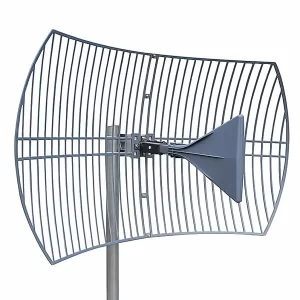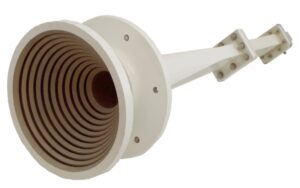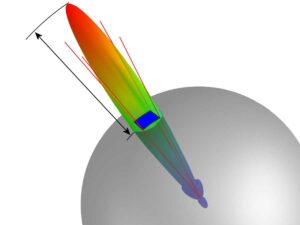In the realm of modern telecommunication and radar systems, the evolution of waveguide technology has been pivotal in facilitating the transmission of electromagnetic waves with enhanced efficiency and reliability. Among various waveguide designs, the double ridge waveguide stands out as a significant innovation, offering unique characteristics that cater to specific industry needs. Understanding its structure, advantages, operating frequency, customization, and implementation sheds light on its pivotal role in contemporary communication systems.
- What is a Double Ridge Waveguide?
A double ridge waveguide is a type of transmission line that serves as a conduit for electromagnetic waves. Its defining feature is the presence of two internal ridges along the walls of the waveguide, unlike conventional rectangular waveguides that possess a single ridge or none at all. This distinct structure alters the electromagnetic field distribution within the waveguide, allowing it to support a broader range of frequencies compared to standard waveguides.
- Advantages of Double Ridge Waveguide Elements:
The incorporation of dual ridges imparts several advantages to this waveguide design. Firstly, it facilitates the transmission of multiple modes of electromagnetic waves, broadening its operational bandwidth. This characteristic makes it highly suitable for applications requiring the transmission of a wide range of frequencies, such as radar systems, satellite communications, and microwave devices.
Secondly, the double ridge configuration minimizes cross-polarization and mode competition, ensuring improved signal integrity and reduced interference. This feature enhances the overall reliability and performance of the waveguide in high-power applications.
- Operating Frequency of Double Ridge Waveguide Components:
Upgrading the overall performance of the device, the frequency band width reaches 5.8-16GHz, and the relative bandwidth is 93%; the double-ridge height gradient structure is conducive to the matching of waveguide and coaxial conversion, and the tuning screw can adjust the standing wave index of the waveguide-to-coaxial converter, using split The one-piece structure facilitates processing and improves efficiency.
- Customized Models, Sizes, and Uses:
The new product line of dual-ridge waveguide assemblies features 28 models, including WRD-180, WRD-650 and WRD-750 sizes. The new product includes straight edge segments, curved and twisted profile configurations. Compared with traditional rectangular waveguide sizes WRD-180 (18-40GHz), WRD-650 (6.5 to 18GHz), WRD-750 (7.5 to 18GHz), these transmission line assemblies have good RF performance, cover a wider frequency band and Provides lower cutoff frequency. Additionally, there is a new line of dual-ridged waveguide coax adapters featuring WRD-180, WRD-650 and WRD-750 waveguide sizes, SMA, Type N and 2.92mm connectors, UG style square flange and typical VSWR Performance is as low as 1.5:1.
- Implementation of Double Ridge Waveguide Elements:
Manufacturing and implementing double ridge waveguide components involve precision engineering techniques. Fabrication processes employ advanced machining and forming methods to achieve the intricate internal ridge structure. These components are then meticulously integrated into systems with careful attention to alignment, ensuring optimal performance and reliability.
In conclusion, the packaging and integration technology of double ridge waveguide components represent a significant advancement in the realm of waveguide engineering. Their unique structure, operational flexibility, and adaptability to diverse applications make them indispensable in modern communication and radar systems, facilitating the seamless transmission of electromagnetic waves across a wide frequency spectrum. As technology continues to evolve, the continued refinement of these components promises further enhancements in communication and transmission capabilities across various industries.







